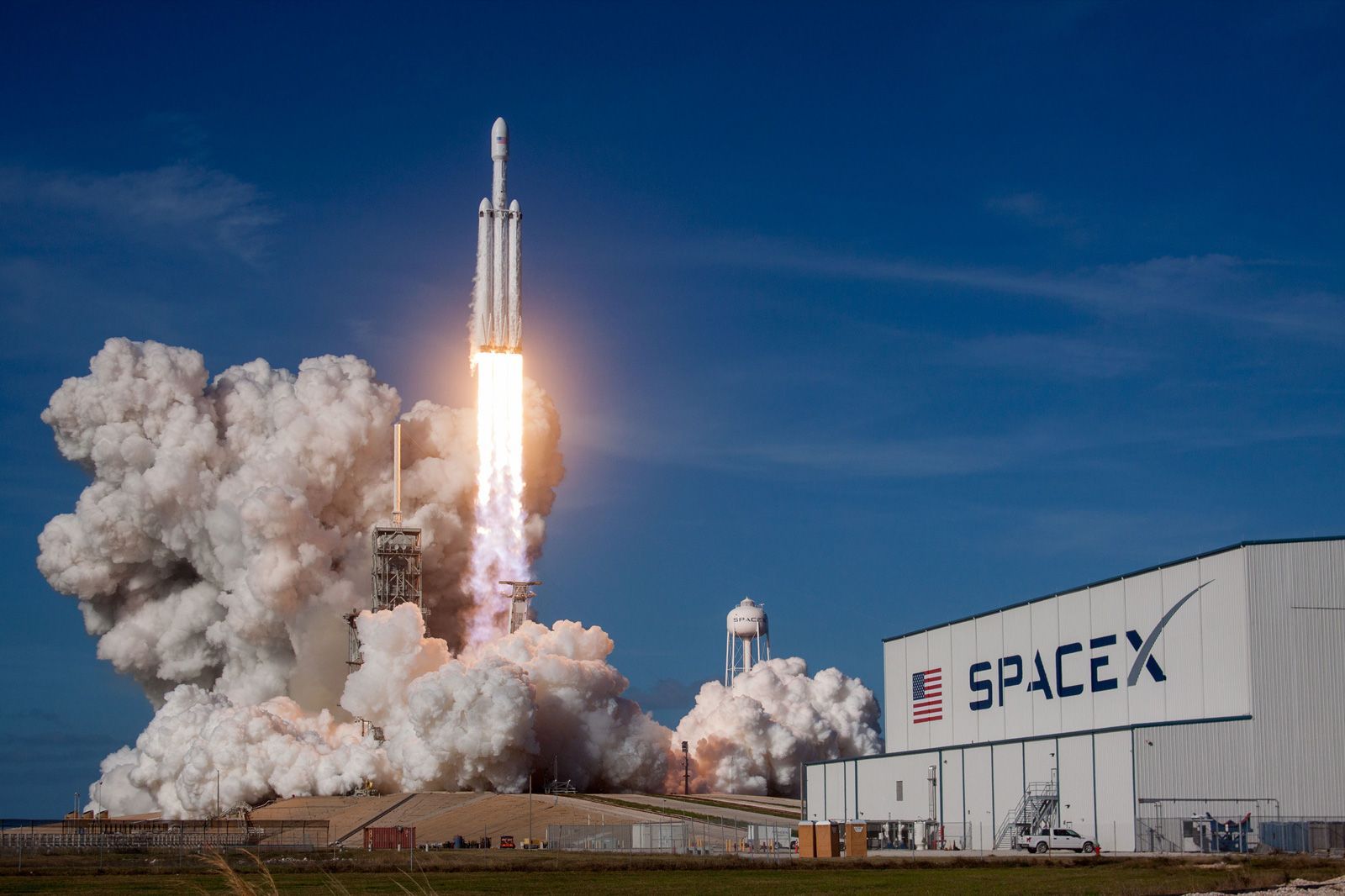
In-Depth Exploration of SpaceX: Disruptive Innovation and Mature Business Logic
Mona Zhang
June 4, 2024
Recently, I was invited by Jennifer He, founder of VOYO Management Consulting, to discuss SpaceX, a company that has generated significant buzz. What attracted me was not the star power of its founder but the fact that it is a company delivering disruptive innovation in a traditional industry, backed by mature and well-understood business logic recognized by the capital markets.
In this interview, I also shared with Jennifer my "Trunity Hexagon Model," a six-dimensional framework I developed throughout my investment career. I found that while struggling companies each have unique issues, successful companies share similar traits. They all excel in six key dimensions, enabling them to lock in customers and establish competitive advantages.
How did SpaceX carve out a path in a government-dominated aerospace sector? How large is the company today? And why is the business logic behind a disruptive company actually very traditional?
Highlights of the discussion:
Introduction: The Growth Story of SpaceX
1. From Internet to Aerospace
Elon Musk, born in South Africa, moved to Canada in his youth and later completed his higher education in the United States. Musk first achieved significant success in the internet industry. He co-founded Zip2, an online city guide company, which was later sold for $307 million. He then founded X.com, an online payment company that evolved into PayPal and was sold to eBay in 2002 for $1.5 billion.
2. Creating SpaceX: Overcoming Early Challenges
In 2002, Musk founded SpaceX with the goal of reducing space transportation costs to enable human colonization of Mars. The early days were fraught with challenges. SpaceX developed its first low-cost rocket, Falcon 1, and faced multiple launch failures. Musk and his team persevered, finally achieving success on the fourth attempt in 2008.
At a critical juncture, SpaceX secured a $1.6 billion contract from NASA to supply the International Space Station. This deal provided vital funding and accelerated the development of the Falcon 9 rocket and Dragon spacecraft.
I will now analyze SpaceX's mature business logic using the Trunity Hexagon Model.
Why Did NASA Award a Contract to a Private Company for the First Time?
Part 1: Value Proposition
The first part of the Trunity Hexagon Model is the value proposition. Companies create value for customers through their products or services.
SpaceX's core value proposition is revolutionizing space travel and dramatically reducing launch costs. Their breakthrough lies in reusable rockets, such as the Falcon 9 and Falcon Heavy, significantly lowering costs.
This cost-reduction strategy is part of Elon Musk's DNA, as seen with Tesla.
The sharp drop in launch costs has led to additional business models:
- Starlink: Providing global internet access, especially in underserved areas.
- Space travel: Offering experiences to space for individuals and their personal items.
Part 2: Business Model
SpaceX's business model is straightforward:
- Launch Services: Commercial satellite launches for government agencies (NASA) and telecom giants.
- Starlink Customers: Recurring revenue from satellite internet services.
- Space Travel: Space exploration experiences for wealthy, visionary customers.
Key point: SpaceX employs a highly vertically integrated approach, manufacturing over 90% of its rocket components in-house. This reduces costs and enables large-scale satellite launches, making Starlink a potential disruptor of traditional telecom services. Lower unit costs create new demand. The subscription model for Starlink ensures predictable revenue, a feature highly valued by investors.
Part 3: Disruptive Innovation and Moat
The third part of the Trunity Hexagon Model focuses on the competitive moat.
SpaceX competes with aerospace giants like Lockheed Martin and Boeing, as well as national space agencies from Russia and China. Despite being a newcomer, SpaceX has won significant contracts and market share, demonstrating its disruptive power.
SpaceX's innovation is supported by vertical integration and multi-disciplinary breakthroughs. It successfully achieved Falcon 9 rocket booster recovery and reuse, further lowering costs.
Before SpaceX, launch costs were about $10,000 per kilogram. SpaceX has reduced this to approximately $5,000 and aims to lower it to $2,000, potentially under $1,000 with the success of Starship. Competitors like Rocket Lab still charge $32,000 per kilogram, and Astra and Relativity Space charge about $10,000 per kilogram. SpaceX currently leads the industry by more than a generation in pricing.
This price advantage stabilizes through economies of scale, transitioning from first-mover advantage and technological innovation to a solid competitive moat.
Part 4: Market Opportunities and Growth Potential
SpaceX's growth lies in global expansion. Demand for low-cost space transport and high-speed internet is increasing worldwide. Starlink already operates in over 60 countries and aims to cover more than half of global households by 2025.
Starlink plans to expand to 5,500 satellites in orbit by 2024, with a long-term goal of 42,000. Starlink currently has over 2.6 million subscribers and aims for 30 million before going public.
SpaceX is also forging partnerships with telecoms, airlines, and maritime companies like T-Mobile, Rogers, Royal Caribbean, and Hawaiian Airlines, broadening its market reach.
Part 5: Financial Performance
From a financial perspective, SpaceX shows strong growth potential and profitability. Analysts project revenue to grow from $9 billion in 2023 to $13 billion in 2024 and $15 billion in 2025, with Starlink contributing an increasing share. By 2030, SpaceX's revenue is expected to reach $63 billion, with Starlink accounting for 67%-75%.
However, great companies are not always great investments. SpaceX's private market valuation has surpassed $180 billion, trading at 14 times projected 2024 revenue. Much future growth is already priced in.
Part 6: Management Assessment
Evaluating the management, especially in startups, is crucial. Founders often determine the company’s ceiling.
Elon Musk's first-principles thinking is deeply ingrained. He combines exceptional technical ability with rapid iteration and constant reflection, driving repeated breakthroughs. This approach is evident in Tesla as well.
SpaceX's success is also due to its team's efforts. Musk attracts top talent and motivates them through a compelling vision. As SpaceX President Gwynne Shotwell noted, the company inspires passionate, talented people to pursue excellence together.
Great leaders attract great people and create harmonious teams—a skill shared by top visionaries like Steve Jobs.
Conclusion
In this interview, I used SpaceX to introduce the Trunity Hexagon Model, a comprehensive framework for evaluating corporate potential and value. The model includes six key elements: value proposition, business model, competitive advantage, growth potential, management quality, and financial performance.
- Value Proposition: Lowering space transportation costs and creating derivative demand.
- Business Model: Vertical integration and predictable subscription revenue via Starlink.
- Competitive Advantage: Cost control, technological innovation, and diverse customer base.
- Growth Potential: Global expansion of space transportation and Starlink.
- Management Quality: Elon Musk's leadership and a motivated, talented team.
- Financial Performance: Strong revenue growth and high investor interest.
Successful companies are rarely built on a single idea, technology, product, or individual. Long-term value creation for customers, shareholders, and society requires solid business logic and deep competitive moats.
Disclaimer: This article is for informational and educational purposes only and does not constitute financial, investment, legal, or tax advice. The views expressed are my own and do not necessarily reflect those of Trunity Partners Ltd. or its affiliates. Any references to specific assets, historical events, or individuals are for illustrative purposes and do not imply endorsement or prediction of future performance. Readers should conduct their own due diligence or consult a licensed advisor before making investment decisions.



